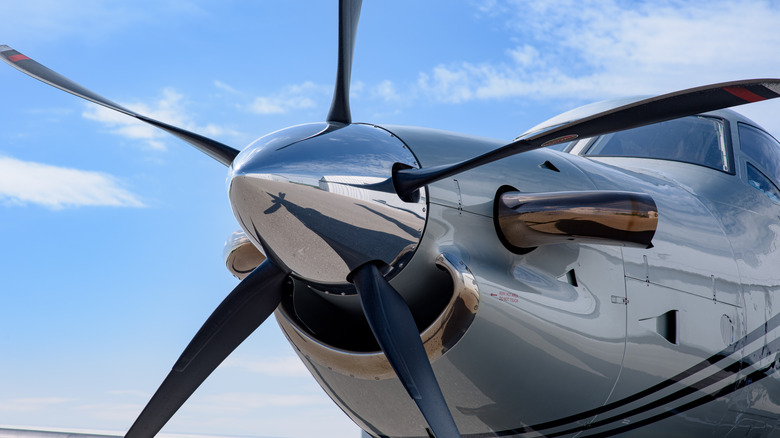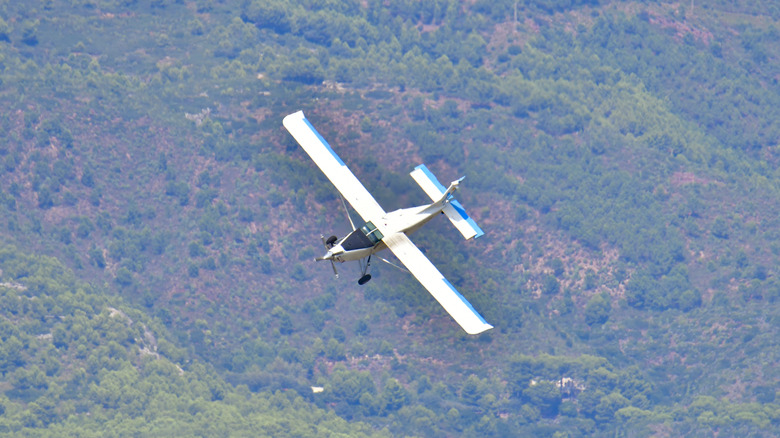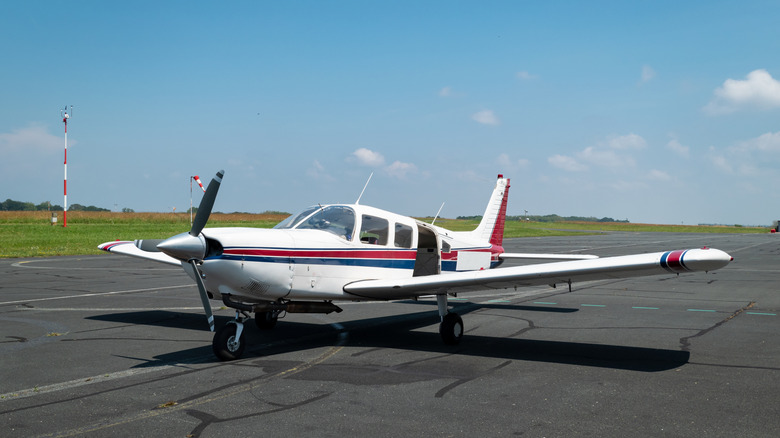Why Single-Engine Propeller Planes Have Slightly Angled Engines
If you have ever observed a propeller plane closely, you might have noticed the propeller is slightly angled to the right. The angled engine and propeller can seem jarring, considering symmetry is ingrained in almost all functional automobile parts, like symmetrical wheels, engine cylinders, or even car seats. In fact, asymmetry, unless on car tires, is perceived as a sign that something might be wrong. However, that's not the case with angled engines in single-engine propeller planes. The engine is intentionally offset to the right to counter the many aerodynamic factors that veer the plane to the left.
Even the most powerful single-engine propeller planes have a tendency to move left even without pilot input due to a variety of aerodynamic factors like, as explained by MzeroA Flight Training, the P-factor, torque effect, corkscrew effect, and the airplane's gyroscopic precession. The slightly angled engine helps negate the leftward veer of the plane to some extent, though pilots need to actively counteract any unwanted leftward motion.
The P-factor cause a leftward yaw
While P-factor is often used as a blanket term for all left-leaning tendencies of an airplane, other factors also play a part in turning the plane leftwards. When a propeller plane flies horizontally, the ascending and descending propeller blades experience an equal angle of attack, allowing for a balanced thrust generation. However, things change when the airplane flies with its nose up to gain altitude.
The angle of attack now changes for the ascending and descending blades. The descending blades experience a greater angle of attack, meaning they produce more thrust than the ascending ones. Moreover, the descending blades travel at a relatively higher speed when climbing up, adding to the thrust they generate. In such a case, there is a thrust imbalance, and the propellers produce more thrust towards the right.
Subsequently, the plane yaws to the left due to thrust imbalance. Fun fact: As detecting yaw can be hard while flying at an altitude, many gliders and helicopters use a string on the front to detect yaw. To put it simply, descending propeller blades get a greater bite at the air and produce more thrust than the ascending blades, causing an unwanted leftward yaw.
Other factors that make a plane lean leftward
Another key factor that veers the aircraft to the left is the corkscrew effect. As demonstrated by Spencer Suderman on YouTube, when the propellers rotate through air, they churn the air in a clockwise direction as seen from the cockpit. As a result, the slipstream produced by the propeller travels in a corkscrew path, or a helix in technical terms, to hit the aircraft's tail from the left, nudging the tail to the right. The plane, in return, yaws to the left.
The torque effect is a demonstration of Newton's third law of motion that also adds to the plane's left-leaning tendencies. As the propellers turn in a clockwise direction from the left to the right, it applies a reaction force on the aircraft in the opposite direction — the left. Lastly, an interesting yet complex contributor known as the aircraft's gyroscopic precision also yaws the plane to the left in some cases.
As the airplane moves in the air, any force applied to the airplane is experienced 90 degrees ahead in the direction of rotation due to gyroscopic precession. Because of this, the plane leans left when the pilot pitches the nose upwards. However, this strange deviation is not limited to just leftward yaw. Gyroscopic precision causes the aircraft to yaw to the right when the nose is pitched downwards. Similarly, the aircraft pitches upwards when the left rudder is pushed and pitches downwards when the right rudder is pushed.


